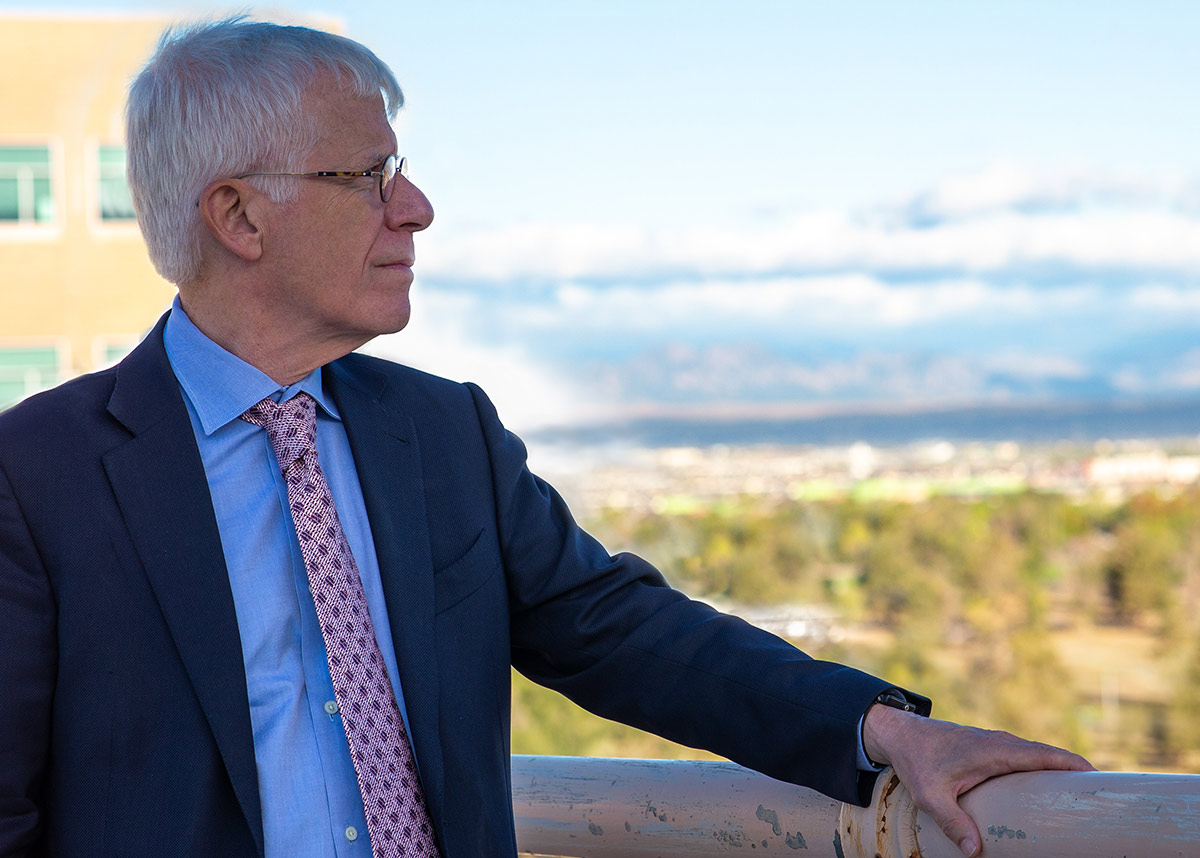The COVID-19 Pandemic: Colorado's surge continues and an election looms
Nov 2, 2020
Writing on November 1, the topics for comment are numerous. Let’s start with the pandemic in Colorado. The latest modeling report from the COVID-19 modeling team provides a clear and certain projection; within the first two weeks of this month, the April peak of people hospitalized with COVID-19 (N=901) will be passed. Unfortunately, any measures taken now to enhance transmission control will be too late to avoid this unfortunate “record.” However, actions are needed to avoid the worrisome possibility that holiday travel and gatherings will worsen a steeply rising epidemic curve.
The Colorado modeling team tracks hospitalizations and fits its SEIR (Susceptible, Exposed, Infected and Recovered) model to the data to estimate transmission control and the effective reproductive number (RE). For the modeling, we rely on hospitalization counts,the number of people in hospitals with COVID-19, because that measure is not likely to be influenced by testing and directly reflects the incidence of infection. Hospitalization counts are rising at an alarming rate, from 200 on October 1 to 687 on October 31. The next obvious question: why? My first answer, of course, is that we don’t know. When pushed, my elaboration is to point to a collective failure to be sufficiently adherent in doing all that needs to be done to control transmission. I also give emphasis to colder weather and the increased risk for exposure to SARS-CoV-2 through indoor airborne transmission. With the data available, it is not possible to identify specific policy measures as responsible.
What are the next steps? For Colorado’s counties, the level of protection required by the Colorado Department of Public Health and Environment (CDPHE) varies with a set of metrics, documented on the COVID-19 dial dashboard. Most counties are now at Safer Levels 1 or 2, but three have moved to Safer Level 3: Adams, Denver, and Logan. More counties will follow in moving to Safer Level 3 and some restrictions will return. I acknowledge “COVID-19 fatigue,” but Coloradans need to stay adherent to behaviors that reduce transmission of infection. Masks work! They protect others and their wearers. I am reminded of Surgeon General Everett Koop’s closing sentence in his preface to the 1986 report, The Health Consequences of Involuntary Smoking, which set a foundation for the clean indoor air movement: “The right of smokers to smoke ends where their behavior affects the health and well-being of others.” By extension, there is no “right” to contaminate the public’s air with a potentially lethal virus. Secondhand virus?
Dr. Anthony Fauci has warned that we are heading for “a whole lot of hurt.” Sadly, I am in agreement as I consider the epidemic curve for Colorado. We are not “turning the corner,” and need to strategize as to how to “bend the curve” once again.
Meanwhile, the November election is imminent and at least “political fatigue” may be ended.The outcome will be critical for the approach taken to rein in the pandemic and for the future of public health in the United States. No need to comment on the politicization of the pandemic and public health. The people of the United States understand that the election’s outcome is critical, and it is encouraging that record numbers of votes are being cast, even in the face of the worsening pandemic.
Vote and do all that you can to slow the pandemic.



